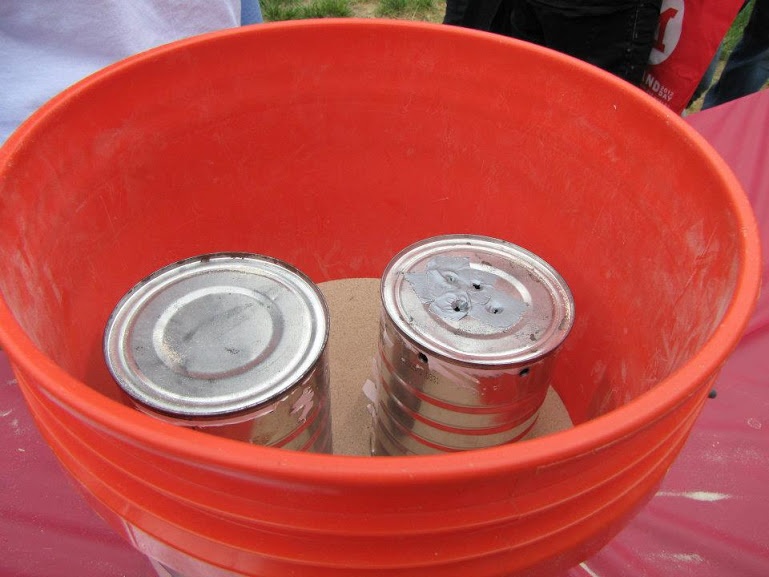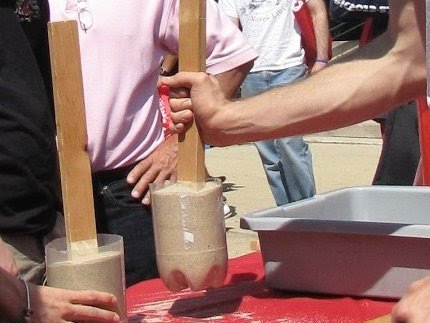Granular Physics
Can you push it?

How objects penetrate into granular materials is of interest to many people, including astrophysicists who study impact craters and civil engineers who test soil strength. If you push a shovel into beach sand, you will feel a strong resistance after reaching a certain depth. This is because when you push on the sand, strong contact forces between the grains are formed, which, in turn, push back on you. Here, we have two coffee cans, one of which has punched holes in its bottom. When the cans are pushed into the sand with equal force, which one goes deeper? The answer may surprise you!
Will It Float?

Under certain conditions, such as avalanches and planet formation, granular materials are capable of behaving like a fluid. One way to ‘fluidize’ a pile of grains is to push it along its surface (this action is called shearing). In this experiment, there is a rotating disk at the bottom of the tank, which causes the pile of 3 mm glass spheres to flow in a rotational pattern. The fluid property that is of interest here is buoyancy, the tendency of an immersed object to either sink or float. When we place an object of high density (steel ball) on top of the flowing pile, does it sink or float? How about a lower density object (rubber ball)?
Will it stick?

When you build a sand castle, you know to pack the sand as tightly as you can. Once the grains are close enough together, the sand undergoes a noticeable change. Instead of behaving like many flowing particles, it stands as a solid, yet fragile, structure. This transition is called jamming and is found in a wide variety of settings—from industrial storage and transport of granular materials, to glass production, to traffic on the Beltway. Here, we demonstrate jamming by showing you how to make a 'sand-cicle' using a soda bottle and a wooden plank.







